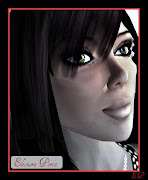Heritage Key's King Tut Virtual Experience is a virtual world much like Second Life though, of course, smaller in scale and hosted by Rezzable on its own equipment.

To explore it, you will need to install a free virtual world client (PC or Mac) on your machine.
http://heritage-key.com/virtual-experience
At this site, you can create an avatar and download the client. Most of the features will be very familiar to an SL user.
The world of King Tut is divided into zones such as The Valley of the Kings, a museum with artifacts and audio descriptions, and a Banks of the Nileexperience with another gallery plus Nile barges, a granary, and more.
Of interest to this educator is how HK provides strongly written and well researched Web portal for student work. It's rich in ideas for assignments:
http://heritage-key.com/
The potential is strong for immersive education in several fields. Teams can explore, complete projects such as my own "Saving Isis" for my first-yearwriting class:
http://iggyssyllabus.pbworks.com/Saving-Isis
Have fun on the Nile!
Ignatius Onomatopoeia (SL)Joe Essid, University of Richmondjessid@richmond.edu
http://heritage-key.com/virtual-experience
At this site, you can create an avatar and download the client. Most of the features will be very familiar to an SL user.
The world of King Tut is divided into zones such as The Valley of the Kings, a museum with artifacts and audio descriptions, and a Banks of the Nileexperience with another gallery plus Nile barges, a granary, and more.
Of interest to this educator is how HK provides strongly written and well researched Web portal for student work. It's rich in ideas for assignments:
http://heritage-key.com/
The potential is strong for immersive education in several fields. Teams can explore, complete projects such as my own "Saving Isis" for my first-yearwriting class:
http://iggyssyllabus.pbworks.com/Saving-Isis
Have fun on the Nile!
Ignatius Onomatopoeia (SL)Joe Essid, University of Richmondjessid@richmond.edu





















 Flickr/eleonoraporta
Flickr/eleonoraporta Myspace/eleonora_porta
Myspace/eleonora_porta Twitter/eleonoraporta
Twitter/eleonoraporta YouTube/username
YouTube/username Del.icio.us/eleonora.porta
Del.icio.us/eleonora.porta Wikipedia/eleonoraporta
Wikipedia/eleonoraporta GMail/Eleonora Porta
GMail/Eleonora Porta Technorati/eleonoraporta
Technorati/eleonoraporta Blog/Eleonora Porta
Blog/Eleonora Porta


